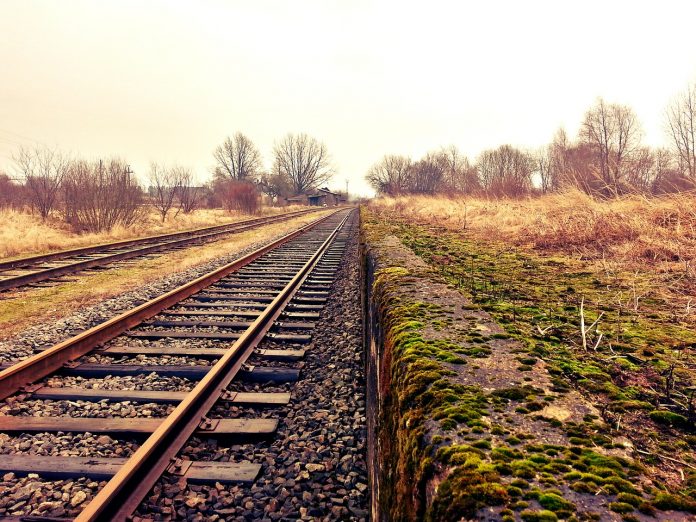We were already tucked into bed when the railcar, allegedly already on fire, rolled less than 2 miles past our home. I was probably fluffing my pillow trying to decide if I was too hot, too cold or just right, when it sped, spewing sparks, toward the next village.
I certainly rolled over and drifted off to sleep not cognizant of how narrowly we had just missed disaster. I was definitely not aware how squarely it was about to hit our neighboring community.
Railroad town
I grew up in a railroad town. When you live among trains, you barely notice them. I fell asleep to a distant whistle. I (stupidly) put pennies on the tracks to retrieve them once flattened wafer thin and still hot. Girlwonder moved into a rental with a train track through their backyard. I assured her that she would get used to it — and she did.
I understand the necessity of trains. That said, I can’t say I was giving them a single thought as I was trying to find the cool side of the pillow while drifting off to sleep. Then came the fireball.
Catastrophic
It is suspected that an overheated bearing or some other very important part that holds it all together gave out — such a casual way to describe a catastrophic event. The train cars were on the track and then they weren’t.
The resultant explosion seems to have been instantaneous. Photos and video show the flames rolling up and into the night. The wall of fire looks like every version of Hades ever depicted.
We awoke to neighbors and friends evacuating. Families were displaced and separated from their homes, farms, livestock and pets. A haze hung over the valley. It smelled like burnt plastic and a hint of … bleach? Was it toxic? How far? How long? What were the train cars now scattered like toys actually carrying? Why in this time of data stored in clouds and instant access was it seemingly so difficult to find out?
To be fair, the railroad sent their spokesman who, on day five of this catastrophe, told a reporter that he “did not know where the train originated.” Social media exploded. For a medium that should be wonderful at sharing information, it is all too often better at spreading rumors.
No clear answers
All of the folks who were amateur epidemiologists during the recent pandemic decided to become environmental scientists instead. I’ve been sniffing the air periodically to see if we can smell the smoke from the explosion. Nature, ever helpful, stepped in when a skunk sprayed somewhere near the house. That became all I could smell.
Citizens were assured that it “couldn’t” get into the waterways and wells as if the very notion was just silly — until the governor of West Virginia confirmed that the chemical had, in fact, reached the Ohio River. The expert statement changed to contaminating waterways did kill fish. We were assured that this is “unfortunate” but somehow the water does still meet “drinking water standards.”
We all know that if someone needs to remediate, say, an old gas station, it seems to take months and millions, just in case some gasoline may have leaked out in 1947. Train cars loaded with hazardous materials are, we are to believe, all cleaned up in 48 hours, and we can all just stop thinking about this. It’s like it never even happened.
Last week’s column was all about how attitude can turn an ordeal into an adventure. Usually, it takes a little bit longer than a week for me to have to eat my words. I try to find the positive in most things. This week, however, has been challenging.
Media
We were well outside the evacuation area as we watched the press conferences unfold. Neighbors thrust into unwanted fame. Through it all, a dangerous sentiment grew that “journalists should stop asking stupid questions.”
First responders were pushed to the breaking point. We understand that talking to the media can be exhausting. Nonetheless, journalists are why we get any transparency at all.
As if the whole situation was not apocalyptic enough, a journalist was allegedly arrested for reporting on the governor’s press conference. From the moment the first spark flew, it seems possible that the entire region was taken for granted as Appalachia specifically, and rural farmland in general, often is. The entity behind the incident (I prefer this to “accident”) seemed slow to react.
Local communities and charities poured forth to help mend their mess. It felt like the railroad has already counted up the “value” of the homes, lives and livelihood lost, and they don’t seem to think it adds up to much.
Thinking journalists are the problem is how — even under the blinding glare of a literal wall of fire — you risk being kept in the dark.














Great article, Kymberly, so I’m hoping there’s a follow-up soon detailing just what the impact is, environmentally and socially, to the local community? Nice writing style.
Kimberly, your next-to-last paragraph says it all: “ It felt like the railroad has already counted up the “value” of the homes, lives and livelihood lost, and they don’t seem to think it adds up to much.” How sad, how true. Big corp places a dollar figure out there that, unless comparable to rebuilding Chicago, has little concern. But maybe get down-and-personal with those affected people – people who have lost their livelihood, pets, animals, possibly family properties due to contamination, etc, etc. Life is truly about perspective, and the perspective of those directly involved (innocently, I may add) is devastating.
I couldn’t have said it better. Those trying to cover up their mistakes in daylight out themselves more and we still get the short end of the stick. Wonderfully written. Thank you!